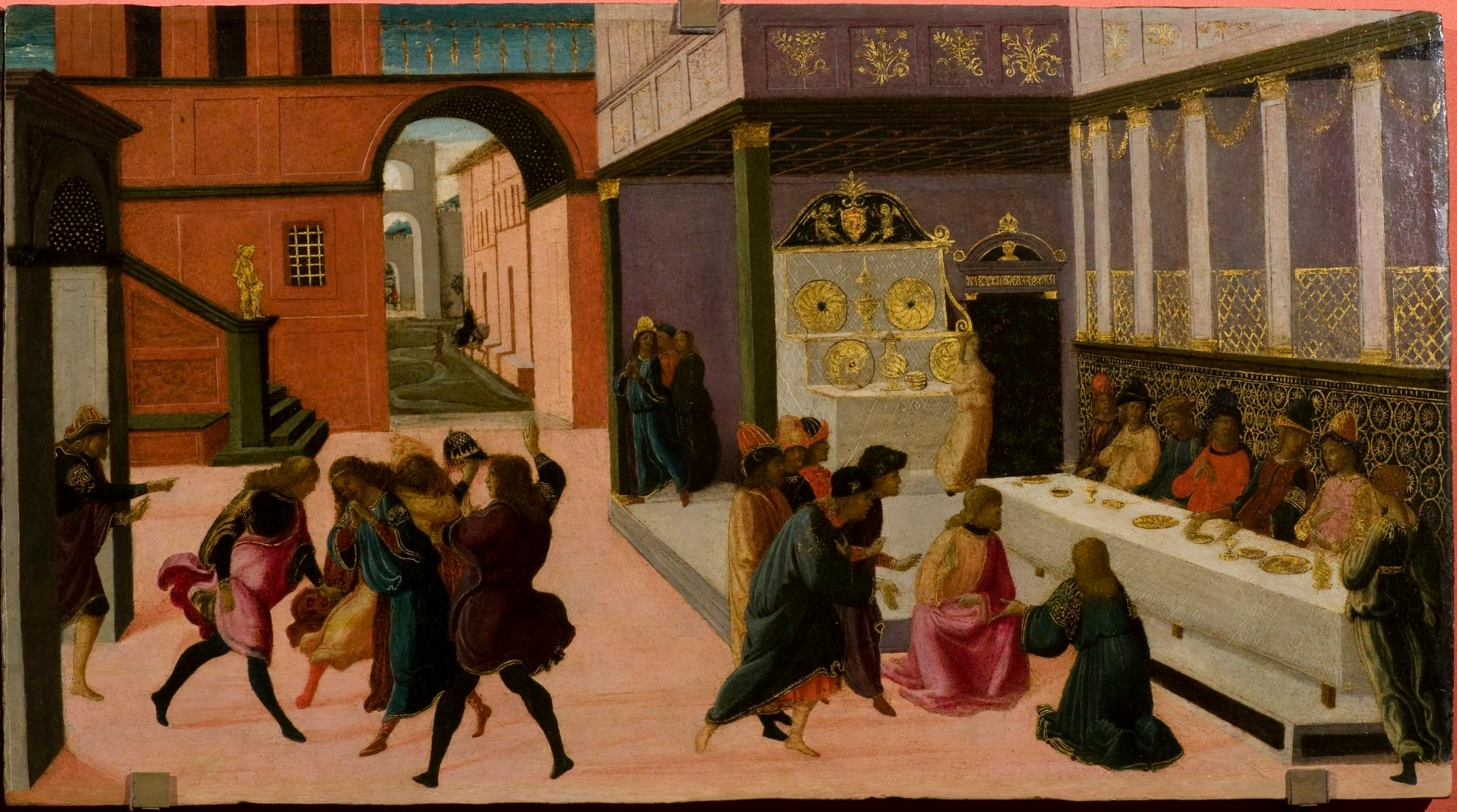The Banquet of Vashti
Jacopo del Sellaio (Florence 1442 – 1493)
The panel is part of a cycle of paintings dedicated to the story of biblical heroine Esther, who would become the wife of Persian king Ahasuerus (better known as Xerxes) and do her best to protect the Jewish people against a plot organized by a court dignitary.
The painting illustrates the banquet organized by Queen Vashti for the women of the palace in Susa. Kneeling before her are the eunuchs sent by her husband Ahasuerus, king of Persia to invite the queen to present herself at his banquet. However, Vashti refuses and because of her disobedience, her husband repudiates her and she is stripped of all honors and sent away from the palace. In Renaissance society, Vashti was used as an example of a disobedient, proud wife, and whose behaviour was the cause of her disgrace.
The work offers interesting information about the way in which banquets were held in 15th-century Florence, often set out in the loggia or courtyard at the palace, alongside long, laden tables, there were credenzas with the most precious pieces of the dinner services, including precious metal objects or ceramics that were genuine masterpieces.
Esther's story was considered an example for Renaissance women and this subject was often chosen to decorate the furnishings in the bridal chambers of the wealthier classes. The panels painted by Jacopo del Sellaio for the Uffizi (inv. 1890 nos. 491, 492, 493), now split into fragments, were part of these illustrious furnishings and this group also included two pieces in the Louvre and in the National Museum of Budapest.
The other two stories of Esther by Jacopo del Sellaio at the Uffizi:
The Banquet of Ahasuerus
Jacopo del Sellaio (Florence 1442 – 1493)
Triumph of Mardocheus
Jacopo del Sellaio (Florence 1442 – 1493)
